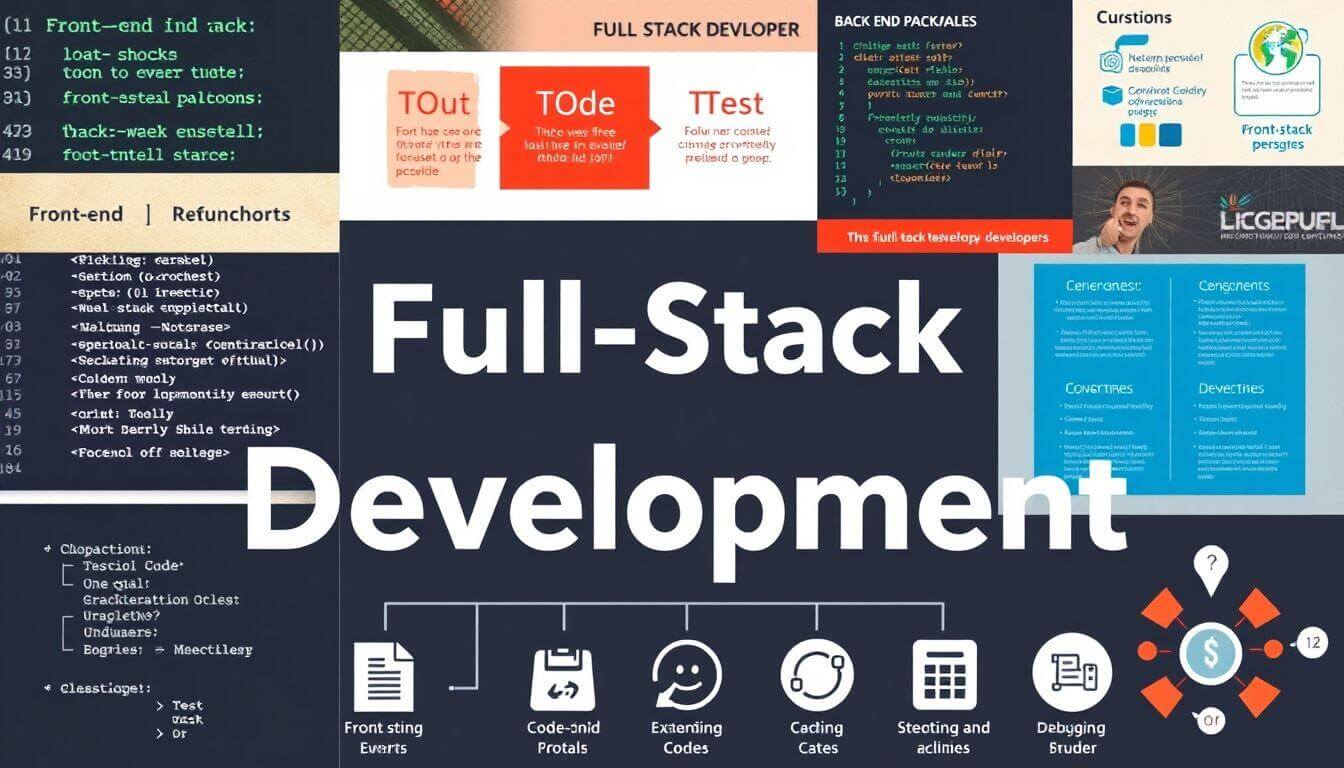What Does A Full Stack Developer Do? A Comprehensive Breakdown Of Roles And Responsibilities

Table of Contents
- Introduction to Full Stack Development
- What is a Full Stack Developer?
- Key Responsibilities of a Full Stack Developer
- Skills for a Full Stack Developer
- Breaking Down the Technology Stack
- Recent Advancements in Full Stack Development
- Path to Becoming a Full Stack Developer
- The Role of Full Stack Developers in Small Businesses
- How Prateeksha Web Design Supports Small Business Growth
- Final Thoughts on the Role of Full Stack Developers
Introduction to Full Stack Development
In today's tech-driven world, businesses often seek developers who can handle both front-end and back-end tasks. This is where the full stack developer comes in. A full stack developer is like a Swiss Army knife for web and software development—they can manage an entire project from start to finish.
What is a Full Stack Developer?
What's a full stack developer? A full stack developer is skilled in front-end (client side) and back-end (server side) technologies. They have an in-depth understanding of how these two sides interact, creating smooth and cohesive user experiences.
Full stack development meaning covers both front-end and back-end programming, database management, and server configuration. It requires developers to adapt to multiple technologies and deliver functional, responsive applications.
Key Responsibilities of a Full Stack Developer
- Project Planning and Conceptualization: Starting from understanding client needs to planning a full project.
- Front-End Development: Creating interactive, visually appealing designs with front end developer skills like HTML, CSS, JavaScript, and frameworks like React and Angular.
- Back-End Development: Building the core application logic, APIs, and server management. Full stack developers often use Node.js, Python, or Java.
- Database Management: Implementing data storage solutions and managing databases like MySQL, MongoDB, and PostgreSQL.
- Testing and Debugging: Ensuring quality control and user satisfaction.
- Collaborating Across Teams: Working with UX/UI designers, project managers, and other devs to build cohesive projects.
Each of these roles requires unique skills and can vary depending on whether the developer works in a startup, large corporation, or agency like Prateeksha Web Design.
Skills for a Full Stack Developer
What does it take to become a full stack developer? Below is a breakdown of key skills:
- Proficiency in Front-End Languages: Essential front-end developer skills include HTML, CSS, and JavaScript.
- Command Over Back-End Languages: Expertise in back-end languages like Java, Python, or PHP.
- Database Management: Knowledge of SQL and NoSQL databases is a must.
- Version Control: Skills in tools like Git for managing code changes.
- Problem-Solving and Debugging: Ability to tackle complex issues.
- Adaptability: With technology evolving, staying up-to-date is crucial.
Breaking Down the Technology Stack
To understand the full stack, let’s break it down into essential components:
- Front-end technologies: HTML, CSS, JavaScript, React, Angular.
- Back-End Technologies: Node.js, Django, Ruby on Rails.
- Database Systems: MySQL, MongoDB, PostgreSQL.
- Tools and Frameworks: Git, Docker, Kubernetes.
- APIs and Microservices: RESTful services, GraphQL.
The ability to work with all these technologies is what makes full-stack developers valuable assets.
Recent Advancements in Full Stack Development
Technology in full stack development is constantly evolving. Here are a few advancements shaping the future:
- JavaScript Frameworks: New frameworks like Next.js are revolutionizing web development.
- Serverless Architectures: Full stack developers can now work with platforms like AWS Lambda.
- AI Integration: Machine learning and AI are making applications smarter.
- Progressive Web Apps (PWA): Making web apps that feel like native mobile apps.
These advancements highlight the dynamic nature of the industry, and staying updated is essential for all full stack developers.
Path to Becoming a Full Stack Developer
How to become a full stack developer is a common question. Here's a roadmap:
- Learn the Basics of Front-End Development.
- Master a Back-End Language.
- Get Comfortable with Databases.
- Build Real Projects.
- Practice with Git and Version Control.
- Stay Updated with New Technologies.
Becoming a full stack developer is a challenging yet rewarding journey that offers a broad scope of opportunities.
The Role of Full Stack Developers in Small Businesses
For small businesses, hiring a full stack developer offers a cost-effective solution. Instead of employing multiple specialists, a full stack developer can handle both the client-side and server-side development. They streamline development, reduce costs, and bring flexibility, making them ideal for small business projects.
How Prateeksha Web Design Supports Small Business Growth
At Prateeksha Web Design, we understand the unique needs of small businesses. Our team of experienced full stack developers can manage your project end-to-end, offering services that include:
- Website Design and Development tailored to your business needs.
- Scalable Web Applications that can grow with your business.
- E-commerce Solutions to help you reach a wider audience.
Our expertise lies in creating cost-effective, high-performing websites and web applications that deliver real results for small businesses.
Final Thoughts on the Role of Full Stack Developers
Full stack developers are multi-skilled professionals who are integral to modern software development. They can manage both front-end and back-end tasks, making them versatile and valuable in any development team. Whether you’re a budding developer or a business looking for an efficient, streamlined solution, understanding the full stack developer role is essential.
For small businesses seeking a complete solution, Prateeksha Web Design offers tailored services with a team of dedicated full stack developers ready to bring your vision to life. Connect with us to explore how we can support your business.
About Prateeksha Web Design
Prateeksha Web Design offers comprehensive Full Stack Developer services, handling both front-end and back-end development. This includes building user-friendly interfaces, managing databases, and designing server-side applications. Additionally, they are skilled in various programming languages, debugging, and improving website performance. Their full-stack developers also collaborate with other teams to integrate multiple systems and maintain software documentation.
Interested in learning more? Contact us today.
